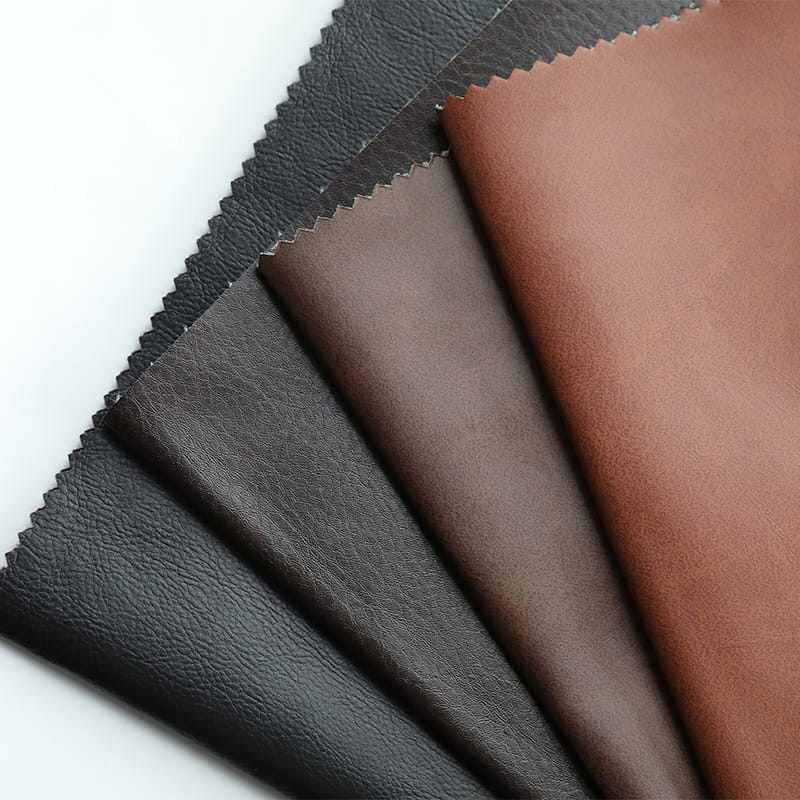The appearance and texture of PU leather fabric are designed to closely mimic the look and feel of genuine leather. Manufacturers of PU leather use various techniques and technologies to achieve a realistic leather-like appearance. Here are some key aspects of the appearance and texture of PU leather:
Grain Patterns: PU leather often features grain patterns on its surface. These patterns can mimic the natural grain found in animal hides. The grain patterns contribute to the visual appeal and authenticity of the material.
Smoothness and Softness: PU leather is generally smooth to the touch and has a soft texture, similar to genuine leather. The material is engineered to provide a comfortable and tactile experience.
Embossing and Detailing: Manufacturers can emboss or imprint patterns onto the surface of PU leather to create intricate textures and designs. This allows for customization and adds depth to the material's appearance.


Variety of Finishes: PU leather can be produced with different finishes to replicate various types of leather, such as smooth leather, pebbled leather, or suede. These finishes contribute to the overall aesthetic and texture of the fabric.
Color Range: PU leather comes in a wide range of colors, making it versatile for different design preferences. The color options can include traditional leather hues as well as more unconventional shades.
Consistency: PU leather offers a more uniform appearance compared to natural leather, as it is manufactured through a controlled process. This consistency can be advantageous for achieving a cohesive look in products.
Stitching: Some PU leather products include stitched details that simulate the seams and stitching commonly seen in genuine leather items. This enhances the realistic appearance of the fabric.
Gloss Levels: PU leather can have different levels of glossiness, from matte to high-gloss finishes. This allows for further customization and can influence the material's overall visual impact.
Thickness: PU leather can be manufactured in various thicknesses, which can impact the texture and feel of the material. Thicker PU leather might feel more substantial, while thinner versions can be more pliable.
Texture Replication: Advanced manufacturing techniques allow for the replication of specific textures, such as crocodile, snake, or ostrich patterns, adding to the variety of textures available in PU leather.


 English
English 简体中文
简体中文





